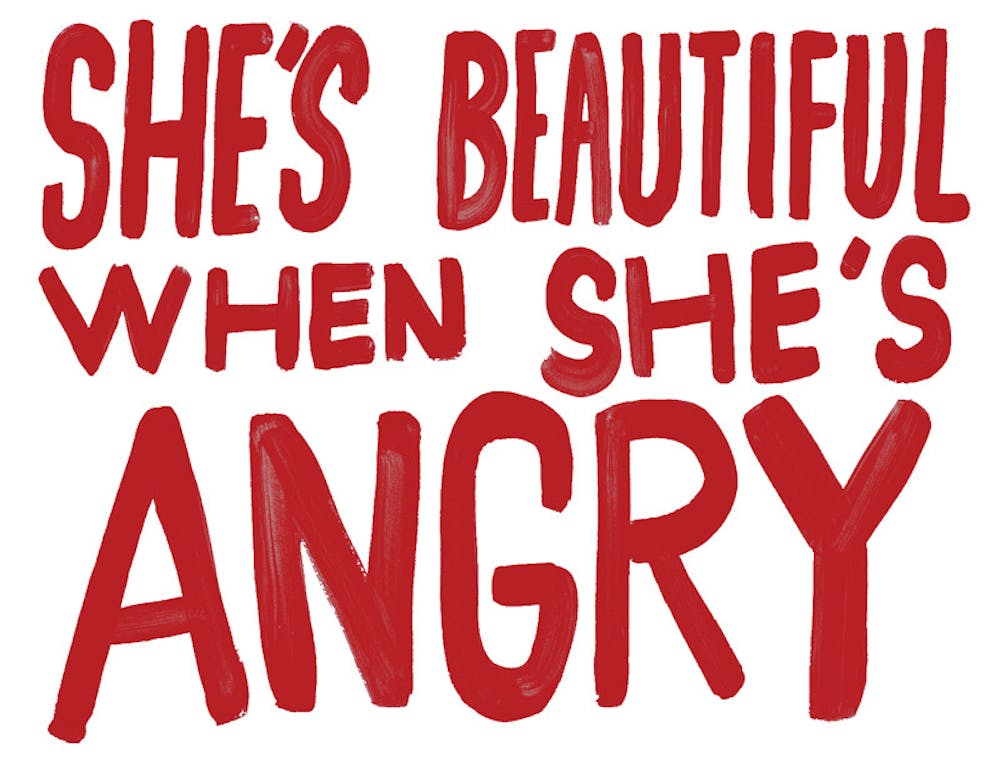Mary Dore’s feature documentary, “She’s Beautiful When She’s Angry,” celebrates the Women’s Liberation Movement of the mid-’60s and early ’70s. A combination of historic photographs, archived documents, video footage and interviews with leaders of the movement captures the passionate and defiant tone of an often overlooked movement that has so strongly shaped modern American society.
The documentary, which is playing at the Cable Car Cinema until Sunday, reaches viewers at a moment when society is once again embroiled in the same inflammatory issues that the Women’s Liberation Movement challenged. From the fight against sexual assault on college campuses to the “No More” campaign against domestic violence to the battle for abortion rights, audiences cannot help but notice worrying parallels that force them to reflect on enduring social issues.
The film chronologically follows the evolution of the Women’s Liberation Movement starting with the 1966 creation of the National Organization for Women. Bearing picket signs with messages such as “same job same pay,” participants in the movement sought equal pay for women in the workforce. The movement subsequently snowballed, and the plethora of new organizations that sprung up nationwide built upon the momentum of women who previously believed they were alone in feeling outraged by sexism. The movement grew to encompass a range of political women’s issues including sexual assault, abortion, child care and sterilization.
The historic images and clips pieced together with music from the ’60s and ’70s and interviews with prominent feminist leaders such as Betty Friedan, Jo Freeman, Susan Griffin and Rita Mae Brown create a compelling and moving experience. Though it is interesting to hear directly from these leading women, it is difficult at times to keep track of the myriad names and faces.
The movement in its early stages centered on the concerns of white, middle-class heterosexual women. This focus led to new factions of the movement founded along race, class and gender lines, such as Black Sisters United and the Black Women’s Liberation Committee. The voices of women such as Eleanor Norton and Fran Beal offer a fresh perspective in the film.
Similarly, factions such as the Lavender Menace, a group of feminists that protested the exclusion of lesbians from the Women’s Liberation Movement, challenged the narrow scope of the umbrella movement. A memorable moment in the documentary reenacts this radical lesbian group crashing a meeting at the Congress to Unite Women by suddenly shutting off the lights and having covert members stand up to reveal the T-shirts they were wearing underneath other clothes, which read “Lavender Menace” in a dramatic expression of their anger at what they called “lesbianism.”
The documentary also places the Women’s Liberation Movement in the context of the larger civil rights and anti-war movements during the ’60s. Though the movement attempted to define itself as a branch of other peace and civil rights movements, men were unreceptive and even hostile to the emerging group. This reaction came as a shock to those involved in the Women’s Liberation Movement, as they had expected the general population, including men, to easily accept this new call for anti-discrimination and equal pay as part of a greater effort to achieve peace and liberation.
The film highlights that, despite these setbacks, the movement had endearing and energetic moments that offer audiences inspiration and humor. Beyond the iconic burning of the bras and PhDs, the film also showcases more obscure events and organizations. One such organization is the Women’s International Terrorist Conspiracy From Hell, a group of young women that sought to challenge the patriarchy by dressing in witch costumes — black outfits, capes and pointy hats — and hexing people with chants. Another radical organization of feminists held the First National Ogling event, during which women walked down the street making objectifying statements and suggestive compliments directed at men. A badge displayed in one of the protests read, “Uppity Women Unite!” — and that rebellious and quirky attitude carries throughout this provoking film.





